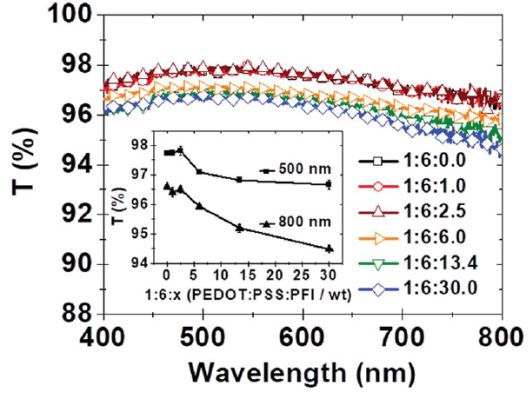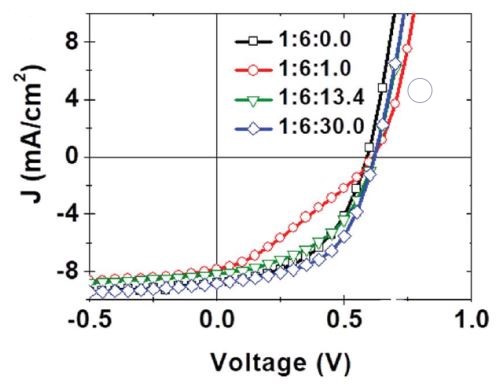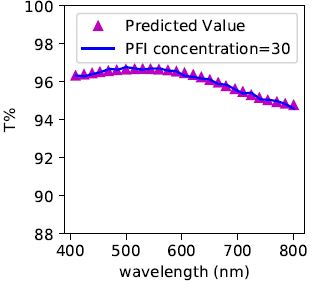ANN based Organic Photovoltaic Cells Modelling
The project was built upon a previous study by Howells et al. that focused on the properties of Poly(3,4-ethylenedioxythiophene):poly(styrenesulfonate) (PEDOT:PSS) with perfluorinated ionomer (PFI) polymer as an additive. PEDOT:PSS layer is widely used as a hole extracting layer (HEL) in Organic Photovoltaice Cells (OPVs). Even though its high ionization potential, large transparency and high conductivity make it an attractive choice for organic optoelectronics, the fact that it is highly chemically reactive and hygroscopic in nature limit its use due to the resulting reduced stability and lifetime. Adding PFI to PEDOT:PSS layer helped overcome these limitations by reducing degrdation of OPV from water and oxygen and by tuning its work function to higher values leading to better charge extraction. In this project, Artificial Neural Networks (ANN) were used to model two characteristics of OPVs: one optical and one electrical (given below).
The idea was to predict the Transmittance or Current Density characteristic using the independent variable in each case and the concentration of PFI additive as inputs to the ANN. This would greatly help in predicting the behaviour of a PEDOT:PSS layer with a given concentration of PFI prior to manufacturing it. A sample prediction would look like as shown:
The figure shows the Transmittance characteristic we predicted for a concentration proportion of 1:6:29 for PEDOT:PSS:PFI against an experimentally known characteristic for concentrations 1:6:30. The same analysis was done using Multilayer Perceptrons (MLP) along with Functional Link Neural Networks (FLANN) which allowed for comparision of both these variants of ANN in terms of training times and accuracies.
Visit Git Repository for the Python code and the final report here.
Directly download the report here.
The study this project is based on is by Howells et al.



